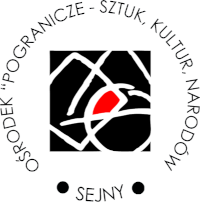A house casts forward meanings any possible moment: when it rises up as a raw construction and later on when it is filled up with life. The recent workshop with Monika Herceg was a step back to the house as a kind of space which could inspire writing as therapy and therefore could shift borderlines and thus allow growth. It is a house, the window, which sends us forward towards the world and makes a safe return possible. The Borderland thus becomes a place of goodness, neighbourly relations, exchange, symbiosis, transformation and braiding; these are the words from which you could sketch a poem, which was the case yesterday at the lakeside in Krasnogruda. Several different verses and stories were created as they came from different places and experiences. The problem of how to talk about ourselves and how to put in images our own, personally true narrative recurred when Luise Kharatyan and Vigen Galastyan had a presentation about the literature and paintings of Armenia. In the 1960s Hrant Matewosjan wrote novels which cast some light on the relationship between the centre and the periphery. Being against the imperial map and the axis of the world focused on Moscow, Matewosjan was in search of the language that would split apart colonial borderlines thinking from the perspective of what was in between them. Armenian art from the 19th and 20th century also balanced and circulated in between. In the Soviet times Armenian people needed to constantly keep on asking about who they were and to look inside themselves. All this is found in the paintings – for example in portraits, in landscapes and the emerging strategies differ from one another. Sometimes Armenia is a clear essence, a patchwork of its own landscape and sometimes the ethnographic background for the new and emancipated subject, and sometimes a question which has remained at the threshold. The guide for Galstyan in his search of the ethical representation and true encounter is Parajanov and the way he pictorially showed otherness blurring the borderlines and heading for transformation and love. We finished the day in the same way as two days before in Krasnogruda's Cafe Europa. The evening meeting was the time when the creative work of the participants of the Summer School was collected – words, images and voices from many parts of the world. On Monday these stories had been taken together by Raphael Rogiński and his music paths breathing with the roots, tradition and the transformation of time taking away unclear and hazy emotions and sudden outlines of the new and vivid feelings; whereas yesterday the meeting was topped by the poems of Irina Mularchuk who has been searching for words after the outbreak of the war in Ukraine and who remains split into two as she needed to leave her homeland. Here, in order to survive, the construction of the house drags itself from the surface of the earth and moves inside, transforming the borderlines. The space becomes thus the field of transgression, the liminal strip which does not allow itself to be truly either here or there. At the same time, the window is then also inside, so the sense of movement changes, and responsibility to the world falls on language, one of the foundations of this new house.
tekst: Piotr Szroeder
translation: Paweł Rogala
fot. Staszek Czyżewski, Piotr Szroeder, Agata Wasilewska














